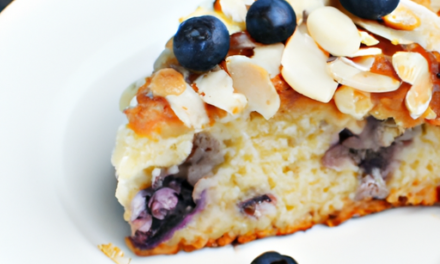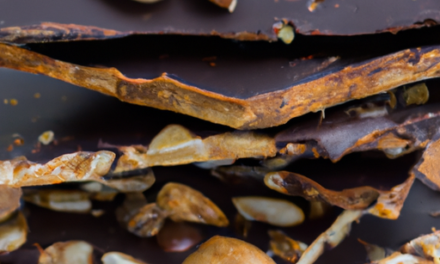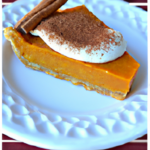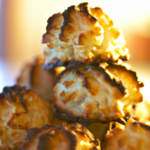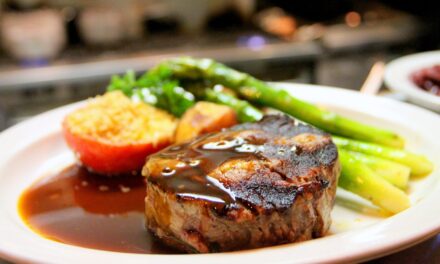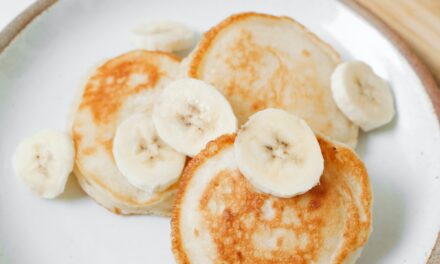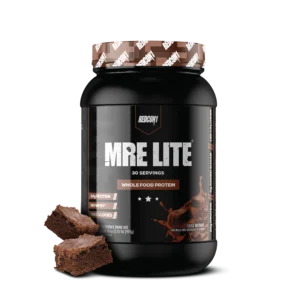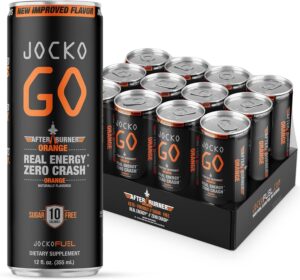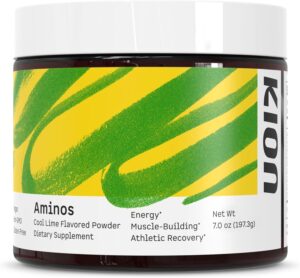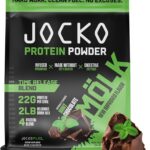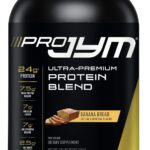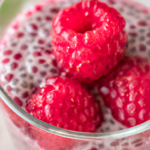
Coconut Macaroons
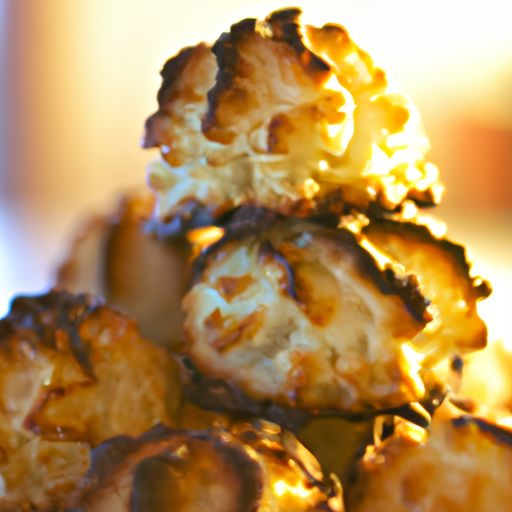
Imagine sinking your teeth into a sweet and chewy treat that not only satisfies your cravings but also aligns with your health goals. Look no further than Coconut Macaroons, the delicious Paleo-friendly dessert that will have you reaching for seconds. With its irresistible combination of shredded coconut and a touch of sweetness, these delectable macaroons are the perfect guilt-free indulgence. So whether you’re a Paleo enthusiast or simply looking for a healthier dessert option, Coconut Macaroons are here to delight your taste buds and keep you on track towards your health goals.
What are Coconut Macaroons?
Definition of Coconut Macaroons
Coconut macaroons are delightful little treats made primarily from shredded coconut, with the addition of sugar and egg whites to bind the ingredients together. They have a soft and chewy texture on the inside, while the outside is often golden brown and slightly crisp. The natural sweetness of coconut combined with the caramelized edges make coconut macaroons a delicious indulgence.
Origin of Coconut Macaroons
The exact origin of coconut macaroons is unknown, but they are believed to have originated in Europe, particularly in France or Italy. Macaroons were initially made with almond paste, but as almonds were rare and expensive, coconut became a more accessible substitute. The sweet and tropical flavor of coconut quickly gained popularity, and coconut macaroons spread throughout Europe. Today, they are enjoyed worldwide as a delightful treat.
Ingredients
Main Ingredients
The main ingredients in coconut macaroons include:
- Shredded Coconut: The star of the show, shredded coconut provides the distinct flavor and texture that makes macaroons so delicious.
- Sugar: Typically, granulated sugar or sweetened condensed milk is used to add sweetness to the macaroons.
- Egg Whites: The egg whites act as a binding agent, helping to hold the macaroons together.
Optional Ingredients
While the classic coconut macaroon recipe only requires the main ingredients, there are several optional ingredients you can add to enhance the flavor and texture:
- Vanilla Extract: A few drops of vanilla extract can add a subtle, complementary flavor to the macaroons.
- Almond Extract: For a nutty twist, almond extract can be added to the macaroon batter.
- Chocolate: Adding melted chocolate to the macaroons or drizzling it over the top can elevate the taste and presentation.
- Nuts or Dried Fruits: Chopped nuts or dried fruits, such as chopped almonds or dried cranberries, can be mixed into the batter to add extra texture and flavor.
Variations of Coconut Macaroons
Coconut macaroons are incredibly versatile and can be customized to suit different tastes. Here are a few popular variations:
- Chocolate-Dipped: Dip the bottoms of the macaroons in melted chocolate for an extra touch of indulgence.
- Flavored: Experiment with different extracts like lemon or coconut for a unique twist on the classic recipe.
- Nutty: Add chopped nuts, such as almonds or pecans, to the batter to add a delightful crunch.
- Citrus Zest: Add the zest of citrus fruits such as orange or lime to infuse the macaroons with a bright and refreshing flavor.
Preparation
Step-by-step Guide to Making Coconut Macaroons
- Preheat the oven to 325°F (163°C) and line a baking sheet with parchment paper.
- In a mixing bowl, combine shredded coconut, sugar, and a pinch of salt. Mix well.
- In a separate bowl, beat the egg whites until they form stiff peaks.
- Gently fold the beaten egg whites into the coconut mixture, ensuring they are evenly incorporated.
- Using a spoon or cookie scoop, portion out the macaroon batter onto the prepared baking sheet, leaving space between each macaroon.
- Bake the macaroons for approximately 20 minutes, or until they turn golden brown on the edges.
- Allow the macaroons to cool on the baking sheet for a few minutes before transferring them to a wire rack to cool completely.
Tips for Perfect Coconut Macaroons
- Ensure the shredded coconut is fresh and not stale, as this can affect the texture and taste of the macaroons.
- Use a non-stick baking sheet or line it with parchment paper to prevent the macaroons from sticking.
- Be careful not to overmix the batter, as this can result in dense macaroons. Gently folding the egg whites into the coconut mixture will help maintain the macaroons’ light and airy texture.
- Monitor the baking time closely to prevent the macaroons from becoming too dry or burning. The edges should be golden brown while the centers remain soft and chewy.
Alternative Cooking Methods
While baking is the traditional method for making coconut macaroons, there are alternative ways to cook these delightful treats:
- Air Fryer: Preheat the air fryer to 325°F (163°C) and place the macaroons in a single layer in the air fryer basket. Cook for approximately 10-12 minutes or until golden brown.
- Stovetop: Lightly grease a non-stick skillet and cook the macaroons over medium-low heat, flipping them occasionally, until they turn golden brown on both sides.
- No-Bake: Instead of baking, form the macaroon mixture into small bite-sized balls and refrigerate until firm. This no-bake option is perfect for those looking for a quick and easy treat.
Health Benefits of Coconut Macaroons
Nutritional Value
Coconut macaroons offer several nutritional benefits. While they are considered a sweet treat, they also contain certain nutrients:
- Fiber: Coconut macaroons made with shredded coconut provide dietary fiber, which aids digestion and contributes to a healthy digestive system.
- Protein: The egg whites in macaroons are a good source of protein, which is essential for muscle repair and growth.
- Healthy Fats: Coconut contains healthy saturated fats that can contribute to overall well-being.
- Vitamins and Minerals: Coconut also contains vitamins and minerals such as iron and potassium, which play important roles in the body’s functions.
Potential Health Benefits
While coconut macaroons should be enjoyed in moderation as part of a balanced diet, they do offer potential health benefits:
- Boosts Energy: The natural sugars in macaroons, combined with the healthy fats from coconut, provide a quick source of energy.
- Supports Bone Health: The calcium content in coconut is beneficial for maintaining strong and healthy bones.
- Antioxidant Properties: Coconut contains antioxidants that can help protect the body against oxidative damage caused by free radicals.
- Digestive Health: The fiber content in coconut contributes to healthy digestion and can help prevent constipation.
Considerations for Dietary Restrictions
Coconut macaroons can be suitable for various dietary restrictions with a few modifications:
- Gluten-Free: Traditional coconut macaroons are naturally gluten-free since they do not contain any wheat or grain products.
- Dairy-Free: Coconut macaroons are typically dairy-free, making them a great option for those with lactose intolerance or a dairy allergy.
- Nut-Free: While the main ingredient is coconut, individuals with nut allergies should ensure the coconut used is not processed in a facility that handles nuts.
Coconut Macaroons and Special Diets
Paleo and Keto-Friendly Coconut Macaroons
Coconut macaroons align well with a paleo and keto diet due to their low-carbohydrate and sugar content. To make coconut macaroons suitable for these diets, use a sugar substitute like stevia or monk fruit sweetener instead of traditional granulated sugar. Be mindful of portion sizes, as these diets often emphasize portion control to maintain ketosis or other dietary goals.
Gluten-Free and Dairy-Free Options
People with gluten allergies or lactose intolerance can enjoy coconut macaroons without worry since they are naturally gluten-free and dairy-free. Ensure the other ingredients used, such as chocolate for dipping or additional flavorings, are also gluten-free and dairy-free if necessary.
Vegan Coconut Macaroons
Vegans can indulge in coconut macaroons by making a few simple substitutions. Replace the egg whites with aquafaba (the liquid from a can of chickpeas) or a commercial egg replacer to bind the ingredients together. Ensure all other ingredients, such as the sweeteners and optional add-ins, are vegan-friendly.
Coconut Macaroons vs. Other Coconut-based Treats
Differences between Coconut Macaroons and Macarons
Coconut macaroons should not be confused with the delicate and colorful French macarons. While both treats feature coconut in some form, they are quite distinct in terms of texture and preparation. Macarons are made with almond flour and have a meringue-like shell with a soft and chewy interior, while coconut macaroons are denser and have a more pronounced coconut flavor.
Coconut Macaroons vs. Coconut Cookies
Coconut macaroons and coconut cookies share a common ingredient but differ in their overall composition. Coconut cookies typically include flour, butter or oil, sugar, and shredded coconut, resulting in a crumbly and cookie-like texture. In contrast, coconut macaroons are held together primarily by egg whites, giving them a chewy and moist consistency.
Coconut Macaroons vs. Coconut Balls
Coconut balls, sometimes referred to as coconut truffles or bliss balls, are typically made by blending together dates, nuts, and shredded coconut. They often incorporate other ingredients such as cocoa powder, nut butter, or honey to enhance the flavor. Unlike macaroons, coconut balls are usually no-bake and are rolled into small, bite-sized balls.
Serving and Presentation Ideas
Ideas for Serving Coconut Macaroons
Coconut macaroons are perfect for any occasion, whether enjoyed as a standalone treat or incorporated into creative dessert presentations:
- Dessert Platter: Arrange a variety of coconut macaroons on a platter with other bite-sized desserts for a visually appealing and delicious spread.
- Afternoon Tea: Serve macaroons alongside a pot of tea as a sweet accompaniment for an afternoon tea party.
- Cookie Jar: Keep a jar filled with coconut macaroons on the kitchen counter for a quick and satisfying sweet treat throughout the day.
- Party Favors: Package individual macaroons in decorative bags or boxes to give guests a delightful party favor to take home.
Decorating Coconut Macaroons
Coconut macaroons can be creatively decorated to enhance their appearance and make them even more enticing:
- Chocolate Drizzle: Melt a contrasting type of chocolate, such as white or dark chocolate, and drizzle it over the cooled macaroons for an elegant touch.
- Sprinkles: Add a playful touch by rolling the macaroons in colorful sprinkles before baking or sprinkle them on top after the macaroons are baked.
- Toasted Coconut: Before baking, lightly toast some shredded coconut and sprinkle it over the macaroons for an eye-catching golden finish.
- Edible Flowers: Top the macaroons with edible flowers for a touch of natural beauty and a unique presentation.
Pairing and Accompaniments
Coconut macaroons can be enjoyed on their own, but pairing them with complementary flavors can elevate the taste experience:
- Coffee or Tea: The slightly sweet and chewy texture of coconut macaroons pairs wonderfully with a cup of hot coffee or tea, providing a delightful combination of flavors.
- Fresh Fruits: Serve macaroons alongside fresh fruits such as berries or sliced tropical fruits like pineapple or mango to balance the sweetness with a burst of freshness.
- Ice Cream: Create a decadent dessert by sandwiching a scoop of vanilla ice cream between two macaroons for a delightful take on an ice cream sandwich.
Popular Coconut Macaroon Recipes
Traditional Coconut Macaroons
Ingredients:
- 3 cups shredded coconut
- 1 cup granulated sugar
- 3 egg whites
- 1 teaspoon vanilla extract (optional)
Instructions:
- Preheat the oven to 325°F (163°C) and line a baking sheet with parchment paper.
- In a mixing bowl, combine shredded coconut, sugar, and a pinch of salt. Mix well.
- In a separate bowl, beat the egg whites until they form stiff peaks.
- Gently fold the beaten egg whites into the coconut mixture, ensuring they are evenly incorporated.
- Using a spoon or cookie scoop, portion out the macaroon batter onto the prepared baking sheet, leaving space between each macaroon.
- Bake the macaroons for approximately 20 minutes, or until they turn golden brown on the edges.
- Allow the macaroons to cool on the baking sheet for a few minutes before transferring them to a wire rack to cool completely.
Chocolate-Dipped Coconut Macaroons
Ingredients:
- 3 cups shredded coconut
- 1 cup granulated sugar
- 3 egg whites
- 1 teaspoon vanilla extract (optional)
- 8 ounces dark or semi-sweet chocolate, melted
Instructions:
- Follow Steps 1-5 from the Traditional Coconut Macaroons recipe.
- Dip the bottoms of each cooled macaroon into the melted chocolate, allowing any excess to drip off.
- Place the chocolate-dipped macaroons on a parchment-lined baking sheet and refrigerate until the chocolate sets.
Flavored Coconut Macaroons
Ingredients:
- 3 cups shredded coconut
- 1 cup granulated sugar
- 3 egg whites
- 1 teaspoon vanilla extract (optional)
- 1 teaspoon almond extract (optional)
- 1/2 cup chopped dried fruits, such as cranberries or apricots (optional)
Instructions:
- Follow Steps 1-5 from the Traditional Coconut Macaroons recipe.
- If desired, before folding in the egg whites, add the vanilla extract, almond extract, and chopped dried fruits to the coconut mixture and stir until well combined.
- Gently fold in the beaten egg whites as directed in Step 4.
- Bake the macaroons as instructed in Step 6.
Coconut Macaroons Around the World
Coconut Macaroons in Different Cuisines
Coconut macaroons have found their way into various cuisines worldwide, each with their own unique twists:
- French: In French cuisine, coconut macaroons are often dipped in chocolate and served as a petit-four or enjoyed during festive occasions.
- Italian: The Italian version of coconut macaroons, known as “amaretti,” often includes the addition of almond paste or amaretto liqueur for an extra burst of flavor.
- American: American-style coconut macaroons often incorporate various mix-ins like chocolate chips, nuts, or dried fruit to create exciting flavor combinations.
Regional Variations of Coconut Macaroons
Coconut macaroons also vary regionally within countries, showcasing the diverse ways in which this delightful treat can be enjoyed:
- Southern United States: In the southern states, coconut macaroons commonly include sweetened condensed milk for added richness and are often dipped in melted chocolate.
- Caribbean: In the Caribbean, coconut macaroons may be spiced with cinnamon, nutmeg, or allspice to create a more aromatic and tropical taste experience.
- Middle East: Middle Eastern coconut macaroons, known as “ma’amoul,” often contain a filling made from date paste or nuts, adding a layer of complexity to the flavor profile.
Coconut Macaroons as Gifts or Party Favors
Packaging Coconut Macaroons
When presenting coconut macaroons as gifts or party favors, the packaging can contribute to the overall attractiveness and appeal of the treats:
- Gift Boxes: Place macaroons in a decorative gift box lined with colorful tissue paper or parchment paper.
- Mason Jars: Layer macaroons in clear mason jars, securing the lid with a ribbon or twine for a charming and rustic presentation.
- Cellophane Bags: Fill cellophane bags with macaroons and tie them with festive ribbon or a personalized tag.
Tips for Gifting Coconut Macaroons
When giving coconut macaroons as gifts or party favors, keep the following tips in mind:
- Include Ingredients and Allergen Information: If gifting the macaroons to someone with dietary restrictions or allergies, include a note indicating the ingredients and allergens present.
- Store Properly: Ensure the macaroons are stored in an airtight container to maintain freshness and prevent them from becoming stale.
- Personalize the Packaging: Consider adding a personalized touch, such as a handwritten note or custom label, to make the gift or favor extra special.
Coconut Macaroons for Special Occasions
Coconut macaroons are a versatile and delightful treat suitable for many special occasions:
- Weddings: Serve coconut macaroons as a sweet addition to a dessert table or package them in elegant gift boxes as wedding favors.
- Baby Showers: Celebrate the upcoming arrival of a little one by offering coconut macaroons as part of a dessert spread or as take-home gifts for guests.
- Holiday Celebrations: Coconut macaroons make a festive addition to holiday gatherings, whether enjoyed on their own or incorporated into a dessert platter.
No matter the occasion, coconut macaroons are sure to bring joy and sweet satisfaction to those who indulge in their deliciousness. Whether you enjoy them plain and simple or get creative with flavors and decorations, coconut macaroons are a delightful treat that will leave you wanting more.




